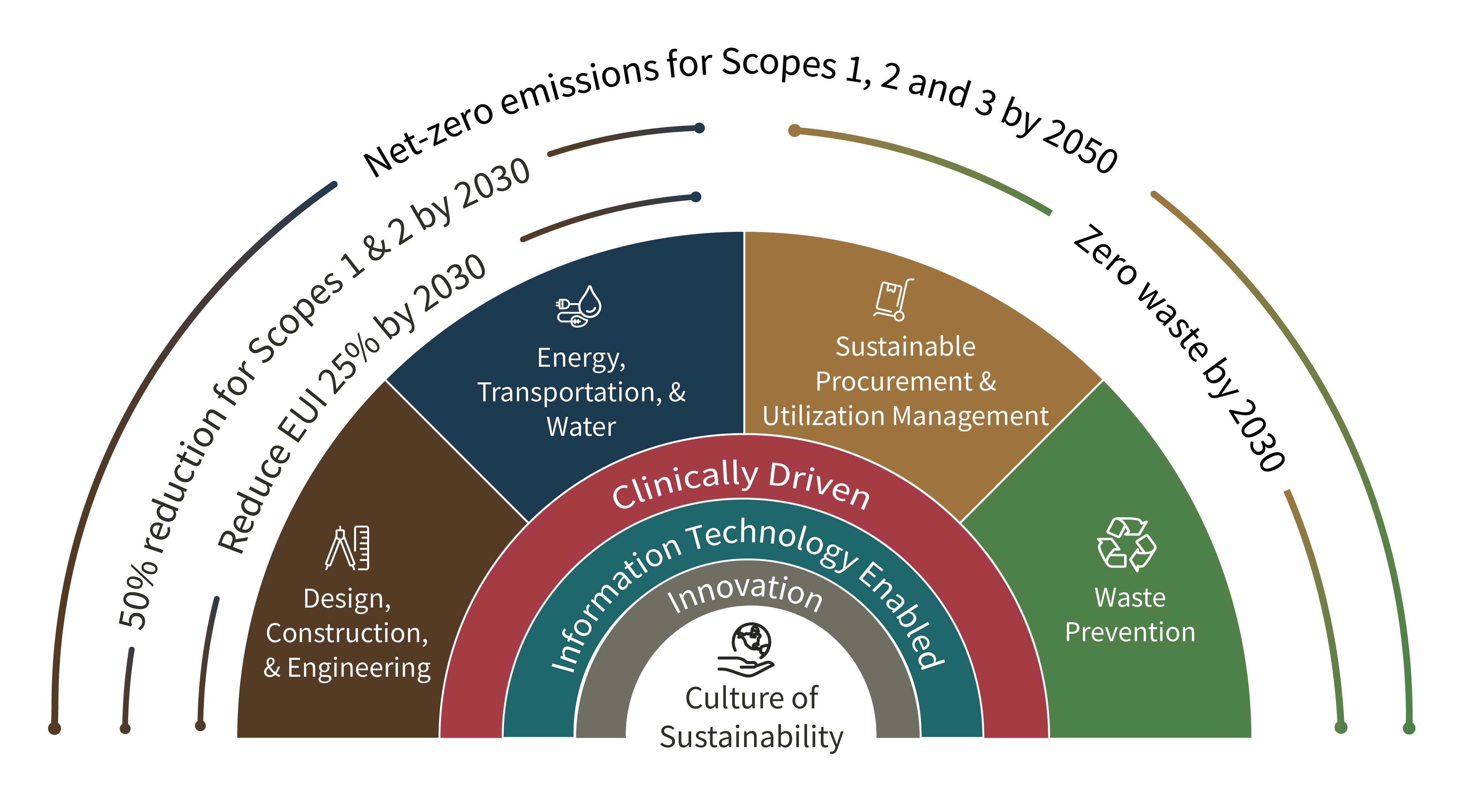Spotlight on Sustainable Healthcare
Building a Sustainable Health System through Leadership Commitment
Stanford Health Care
In addition to serving their local community, patients come from across the state, the country, and internationally.
Stanford Health Care has built a culture of sustainability that is both guided and underpinned by strong leadership commitment. Upon realizing their role in greenhouse gas emissions and waste generation, its leadership recognized their ability and responsibility to implement change. The Board of Directors at Stanford Health Care endorsed an affirmation statement and positioned sustainability as a top priority. They utilized a multi-pronged approach to integrate sustainability into the organization’s culture and build engagement, including conducting a greenhouse gas inventory (GHG) to establish a baseline and setting multi-year (multi-decade) sustainability targets for waste and emissions reduction. They also engaged staff through visioning sessions, industry expert involvement, and established a Sustainability Program Office (SPO).
Setting goals, establishing metrics, incorporating energy and waste-saving strategies, increasing engagement and widespread impact are ongoing functions of the SPO. They maintain their momentum and visibility by attending monthly manager meetings, sponsoring Sustainability Ambassador Awards, engaging Human Resources in promoting sustainability as a recruitment and retention tool, extensive communications at both the executive and staff level and continually expanding their goals and reach. Stanford Health Care also developed a sophisticated framework depicting their sustainability commitment and goals, all deriving from a core culture of sustainability, supported by leadership (see figure 1).
In 2023, Stanford Medicine refreshed its Integrated Strategic Plan for 2030, with the aim to support human and environmental health by harnessing unique capabilities and reducing environmental impact.
Benefits & Impact
In addition to considerable reductions in greenhouse gas emissions, Stanford Health Care has won Practice Greenhealth sustainability awards for six consecutive years, most recently receiving the first Circle of Excellence award in the leadership category. This serves as an excellent example of how leadership commitment and a multi-pronged approach to engagement can drive impactful and ongoing sustainability practices.
Figure 1: Stanford Health Care Sustainability Framework




